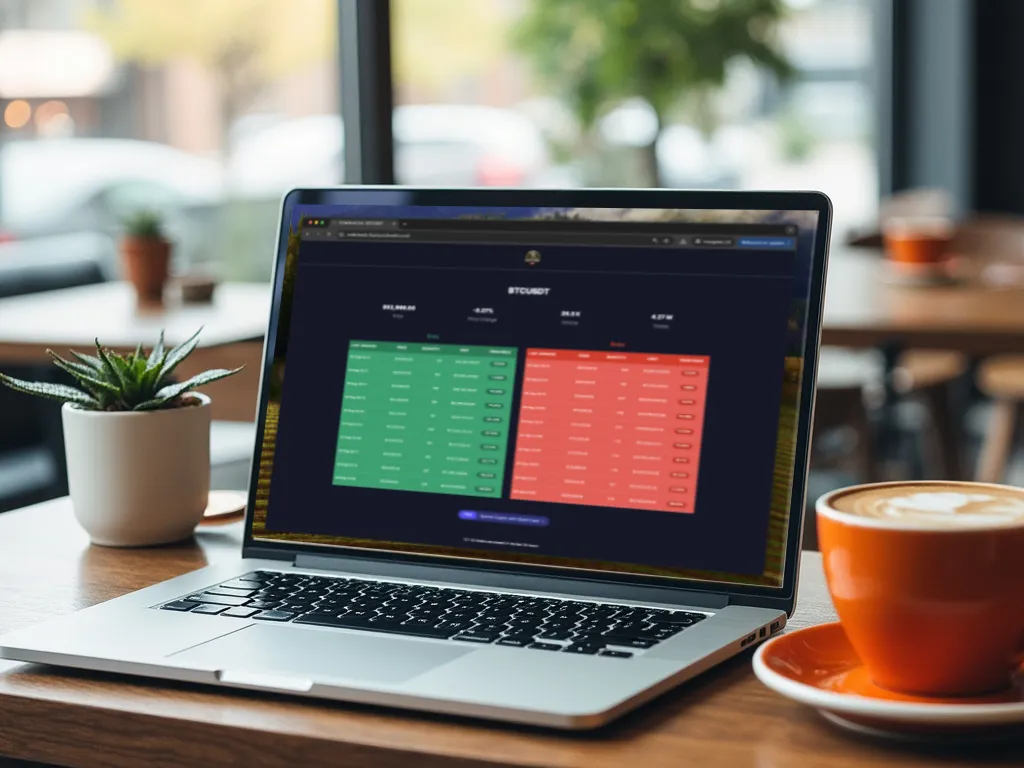The Power of Real-Time Orderbook Analysis for Strategic Trading
In the fast-paced world of financial trading, having the right tools at your fingertips can mean the difference between capitalizing on an opportunity and missing out. One such tool that has become indispensable for traders is the Real-Time Orderbook. Here’s why integrating a strategy based on real-time orderbook data is not just advantageous but crucial for modern trading.

1. Immediate Insight into Market Sentiment
The order book displays all buy and sell orders in real-time, providing a snapshot of market sentiment at any given moment. Unlike historical data, which tells you what has happened, the real-time orderbook tells you what is happening now. This immediate insight allows traders to gauge whether the market sentiment is bullish or bearish, enabling more informed decision-making.
2. Identifying Key Support and Resistance Levels
Support and resistance levels are foundational in technical analysis. A real-time orderbook helps in identifying these levels with higher accuracy. When large orders are placed at certain price points, they act as barriers where the price might reverse or consolidate. Spotting these large orders (often called 'walls') in real-time can help traders predict price movements more reliably than relying on past data alone.
3. Detecting Market Manipulation
Market manipulation, like spoofing or layering, involves placing orders with the intent to cancel them before execution. These practices can mislead other traders about the true demand or supply. A real-time orderbook allows traders to see these large, transient orders, providing a chance to recognize and react to potential manipulations, thus protecting their investments.
4. Enhanced Liquidity Analysis
Liquidity is king in trading. The real-time orderbook shows where liquidity is concentrated. Knowing where the large orders are can help traders decide when to enter or exit trades. High liquidity areas might offer better pricing and less slippage, making trade execution smoother and more cost-effective.
5. Strategic Order Placement
By observing where other traders are placing their orders, you can strategically place your own. For instance, if there's a large buy order just below the current price, you might decide to place your sell order just above it, anticipating a bounce off that support. This real-time data allows for dynamic strategy adjustments, which is far superior to static, pre-planned strategies.
6. Psychological Edge
Trading isn't just about numbers; it's deeply psychological. Seeing the activity in the order book can provide a psychological edge. It helps in understanding the fear, greed, and hesitation among other traders. This can be particularly useful in volatile markets where emotional decisions dominate.
7. Real-Time Risk Management
In trading, risk management can be as crucial as the strategy itself. Real-time orderbook analysis aids in setting more accurate stop-loss and take-profit levels based on where the big orders are sitting, reducing the risk of being caught in a sudden market move against your position.
Conclusion
Incorporating a real-time orderbook into your trading strategy isn't just about having another tool; it's about embracing a comprehensive approach to understanding market dynamics as they unfold. This tool provides a live feed of market depth, intentions of other traders, potential price movements, and liquidity, all of which are pivotal for making timely and strategic trading decisions. Whether you're day trading, swing trading, or looking for long-term investments, the insights from a real-time orderbook can significantly enhance your market analysis, giving you a competitive edge in the ever-evolving financial markets.
By leveraging this feature, traders can visualize and act on market trends with precision, making it an essential component of a savvy trader's arsenal. Embrace the depth of market data, and let real-time orderbook analysis guide your trading to new heights of success.